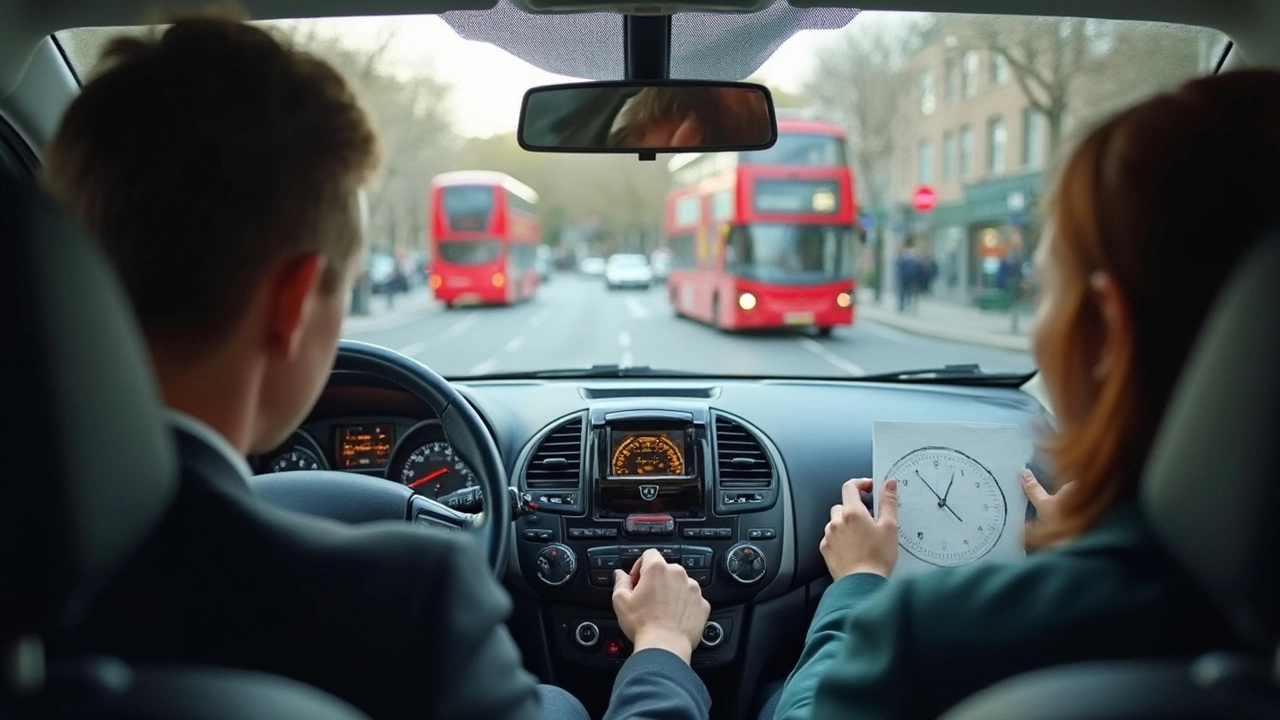Practical Driving Test: What You Need to Know to Pass on the First Try
Staring at the practical driving test can feel like standing at the edge of a cliff. The good news? Most of the exam is about habits you already have. If you focus on a few key areas, you can walk out with a pass and a solid score.
Master the Core Manoeuvres
Examiners watch how you handle reverse parking, three‑point turns and hill starts. Practice each manoeuvre until it becomes second nature. Set up a small circuit in your driveway or a quiet car park, time yourself, and notice any hesitation. The smoother the execution, the fewer marks you lose.
Don’t forget the ‘show me, tell me’ questions. They test your knowledge of safety checks, not just your driving. Pick a few common questions, answer them out loud, and keep the answers short but accurate. This part can add valuable points to your overall score.
Common Faults That Lead to Failure
One major fault can sink the whole test. According to our post “Driving Test Mistakes: How Many Major Faults Lead to Failure?” the most frequent major faults are dangerous lane changes, ignoring traffic signals, and poor control on the brakes. Keep an eye on the mirrors, signal early, and always stop fully at red lights.
Minor faults add up fast. Forgetting to check blind spots, rolling through a stop sign, or not giving way to cyclists are easy to correct with a quick mental checklist before you move. A simple “mirror, signal, check” routine can save you from a cascade of low‑level errors.
If you’re aiming for a good score, understand what the numbers mean. Our article “Is a 74 a Good Driving Test Score?” explains that a 74 is a passing mark, but the higher the score, the better your insurance rates may be. Aim for a score in the high 70s or low 80s by eliminating unnecessary faults.
For HGV candidates, the practical test includes additional checks like coupling and uncoupling the trailer. The same principles apply: practice slowly, focus on safety, and keep your vehicle under control at all times. The more you rehearse, the less nervous you’ll feel on exam day.
Timing can also affect your performance. Some drivers wonder if taking the test in the morning helps. While there’s no magic time, many report feeling fresher and more alert early in the day. Choose a slot when you’re usually at your best.
Before the test, do a final walk‑around of the vehicle. Check lights, tyre pressure, and that the mirrors are correctly positioned. A tidy, well‑maintained vehicle shows the examiner you take safety seriously and can prevent surprise deductions.
During the test, stay calm and breathe. If you make a mistake, acknowledge it, correct it, and move on. Examiners understand nerves and will give you the chance to recover as long as the fault isn’t serious.
Finally, review the feedback sheet after the test. Whether you pass or not, the notes highlight exactly where you can improve. Use that info for your next lesson or practice session, and you’ll keep climbing the scoring ladder.
With focused practice, awareness of common faults, and a clear understanding of the scoring system, the practical driving test becomes a manageable hurdle rather than a mystery. Good luck out there – you’ve got this!
- July 23 2025
- 0 Comments
- Rowan Cavendish
Test Booking: How to Book and Prepare for Your Driving Test
Everything you need to know about test booking—from finding a slot to acing your driving test. Tips, myths busted, and step-by-step guidance.
- July 13 2025
- 0 Comments
- Rowan Cavendish
Biggest Mistakes to Avoid on Your Driving Test: Essential Tips for Passing
Don't let simple mistakes cost you a pass on your driving test. Learn which errors trip up most learners and get smart advice for first-time success.
- June 13 2025
- 0 Comments
- Rowan Cavendish
How Long Is a UK Driving Test? Key Facts and Essential Pass Plus Tips
Curious about how long the UK driving test actually lasts? This article breaks down the exact timing for both theory and practical tests, explains why the timings matter, and busts some common myths about the process. You'll also pick up key facts and get insider tips for preparing—especially if you're thinking about taking a Pass Plus course after your test. The aim is to help you feel ready, cut through confusion, and make the whole experience less stressful.
- May 10 2025
- 0 Comments
- Rowan Cavendish
Is Hesitation a Serious Fault in Driving Tests?
Hesitation on a driving test can mean much more than just taking a pause. This article digs into what counts as hesitation, why examiners mark it as a fault, and how it impacts your test results. You’ll learn when being careful turns into being too slow and what exactly examiners look for at tricky junctions or roundabouts. If you're struggling with nerves or not sure how much waiting is too much, this guide breaks it down with real tips and examples so you don’t fail over something avoidable.
- Driving Lessons (41)
- HGV Training (31)
- Driving Test Tips (31)
- Driving Test Booking (26)
- Driving Licence Renewal (23)
- Driving Theory Test (21)
- Pass Plus Course (15)
- Driving Tips (15)
- Intensive Driving Course (15)
- Driver Licensing (14)
Categories
- December 2025 (12)
- November 2025 (13)
- October 2025 (21)
- September 2025 (5)
- August 2025 (8)
- July 2025 (30)
- June 2025 (30)
- May 2025 (30)
- April 2025 (31)
- March 2025 (30)
- February 2025 (28)
- January 2025 (34)
Archives
- driving lessons
- driving test
- driving tips
- intensive driving course
- driving test tips
- HGV training
- learn to drive
- driving theory test
- driver training
- driving test booking
- pass driving test
- HGV driving
- road safety
- driving license renewal
- Virginia driving test
- learner drivers
- safe driving
- Virginia driver's license
- driving license
- learning to drive




